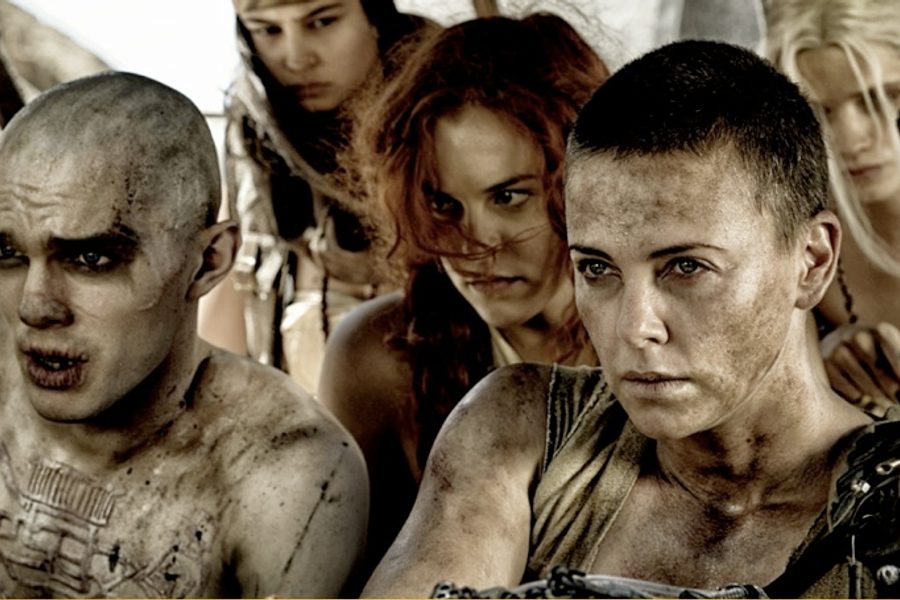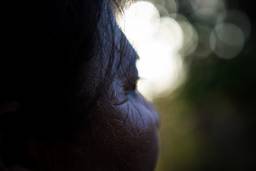Mad Max: Fury Road and the Glaring Whiteness of Post-Apocalyptic Films
Will people of color ever make it to the end of the world?
Nashwa Khan

Mad Max: Fury Road is making waves as a must-see “feminist” film, largely in reaction to calls for a boycott by so-called men’s rights activists (MRAs) based on analyses such as “[Charlize] Theron sure talked a lot… Nobody barks orders to Mad Max.” In a desire to protect and invest in anything MRAs don’t like, many women and male feminist allies raced to theaters.
As Eileen Jones notes, when you actually look for the feminist plot elements in Fury Road, there’s not much there. However, there’s another thing missing in Fury Road: people of color. Despite being set in Australia — historically an Aboriginal country — and filmed in Namibia, the world of Fury Road is eerily white. Out of 15 characters listed in the opening credits, only two are visibly people of color: Toast the Knowing, played by Zoe Kravitz (who is biracial, Black and Ashkenazi Jew), and Cheedo the Fragile, played by Courtney Eaton (who, according to Australian tabloid The Sunday Times, “credits her father with her Caucasian looks,” but has Maori, Pacific Islander and Chinese lineage). Neither held a lead role, and some audiences seem to have missed that Eaton was non-white, citing Kravitz as the only identifiable woman of color.
By contrast, Fury Road offers variety of white men, some tall, some thin, some not so thin, and a posse of beautiful cisgender white women who serve as “breeders” — sexual and reproductive slaves — for the cult leader of this corner of the post-apocalyptic world, Immortan Joe. The effect is the aesthetic of a Chanel runway, with one or two women of color for flavor. Many have claimed the film put women ahead — but which women? Certainly not women who are very visibly racialized through curves and features. “Ethnically ambiguous” seems to be the only type of racialized woman who makes it to the end of the world.
Kravitz and Eaton’s characters do survive the film, and having a person of color standing at the end makes Fury Road a rare unicorn within the post-apocalyptic genre. But that’s a very low bar.
Perhaps we shouldn’t so surprised at the whiteness of Fury Road, given the consultant that the director chose: Vagina Monologues creator Eve Ensler, who has been subject to many criticisms around her dealings with women of color. For example, she timed her V-Day, a day of action to end violence against women, to coincide with The Global Day to Honor Missing and Murdered Indigenous Women, without acknowledging the other campaign. She has also been criticized for appropriating the trauma faced by Congolese women for her own campaign.
Another consultant on the film is notoriously insensitive about race: comic book illustrator Brendan McCarthy who has drawn criticism for his trope-y portrayals of black characters in Spider-Man comics and his Facebook comments that seemed to minimize the death of Trayvon Martin.
The lazy insertion of one or two people of color as a way to attain “diversity” to satisfy progressive audiences is irritating, but apparently effective. A number of white women who are very invested in Fury Road being feminist and progressive have championed its diversity on social media. One much-shared Tumblr post by Jeanne the FanGirl, a Polynesian feminist, cites the Maori heritage of Eaton and another actor, Megan Gale — who plays The Valkyrie, a matriarchal tribe member — as evidence that the film tells a story “dismantling of colonial oppression where indigenous women play key roles in the fight and future of the world.” Gale is not even listed in the opening credits, but I guess we should take crumbs because food is so scarce in post-apocalyptic worlds.
Gale has said she is a “small percentage” Maori. But the movie never mentions that these two women are Maori, making Jeanne the FanGirl’s reading feel like a reach. The inclusion of Eaton and Gale doesn’t serve to make the world of the film less white, just to appease critics. Posts like this by allies derail a real conversation about why the darkest people with no Eurocentric features never make it to the end of the world.
As a racialized woman with indigenous lineage, as well as two parents who are people of color, I am drained from watching my people who are more visibly indigenous or racialized get pushed to the margins.
At this point, the blaring whiteness of post-apocalyptic in popular culture is something I have become numb to. I realized as a child that film fans would remain more concerned with issues like, say, the lack of feathers on dinosaurs, than with all-white or majority-white casting. Although most of our world is not white, the end of the world is always so. The math does not add up.
Take a look beyond Fury Road to the popular zombie-apocalypse television show The Walking Dead. a show that has been given a ribbing for its ongoing inability to keep more than one black man alive at a time. It seems our numbers have to be capped. I still am sleuthing as to why — maybe there are not enough spices in the rations?
Filmmakers even go out of their way to whiten the post-apocalyptic landscape: Kravitz also played one of the only people of color in the film Divergent, set in Chicago — a city that is very diverse — and based on a book by Veronica Roth that had another major character of color, who was cut from the film. Are people of color unworthy of the end of the world? Is it presumed we would not cope well? Do people assume we need a rice cooker or wouldn’t eat roadkill? Or is it simply that our bodies are so easily disposable?
Witnessing white feminists find ways to make themselves feel better about this lack of diversity in a movie they really want to love points to a larger problem. A big part of feminism is race, but these self-imposed blinders suggest that as long as a movie appeases white feminists, they will not question in solidarity why we women of color are absent.
Sure we may have survived colonialism and imperialism, but apparently we aren’t considered ready for this apocalypse stuff. It could be the canned food or lack of hot plates; I am still working that one out.




